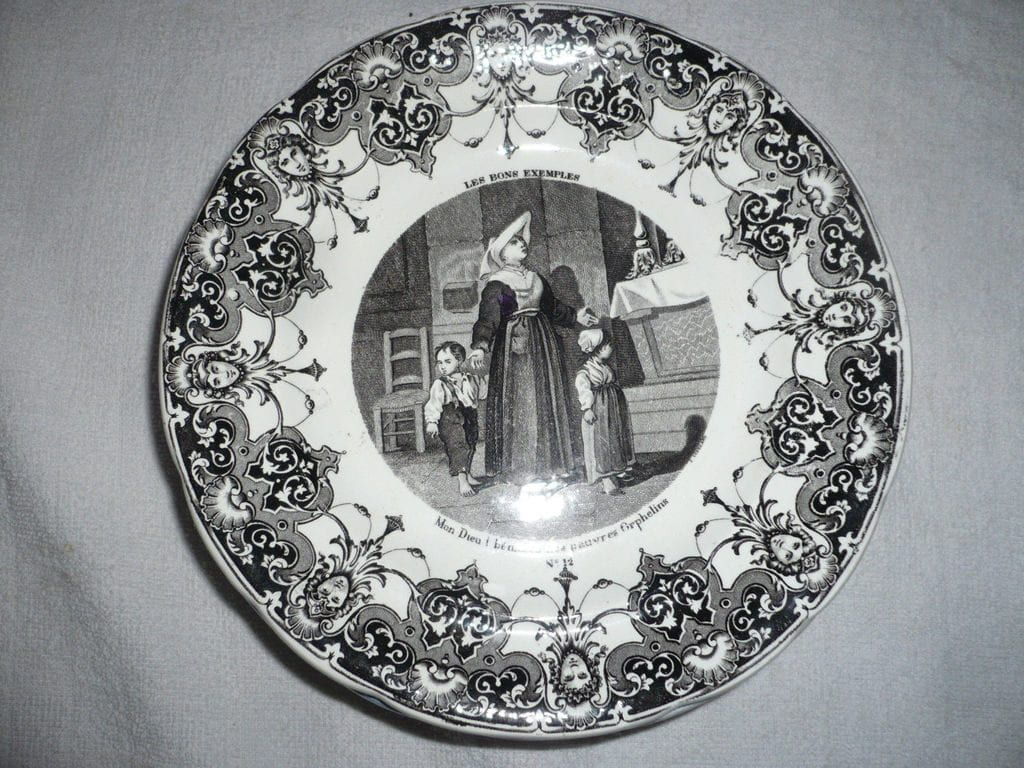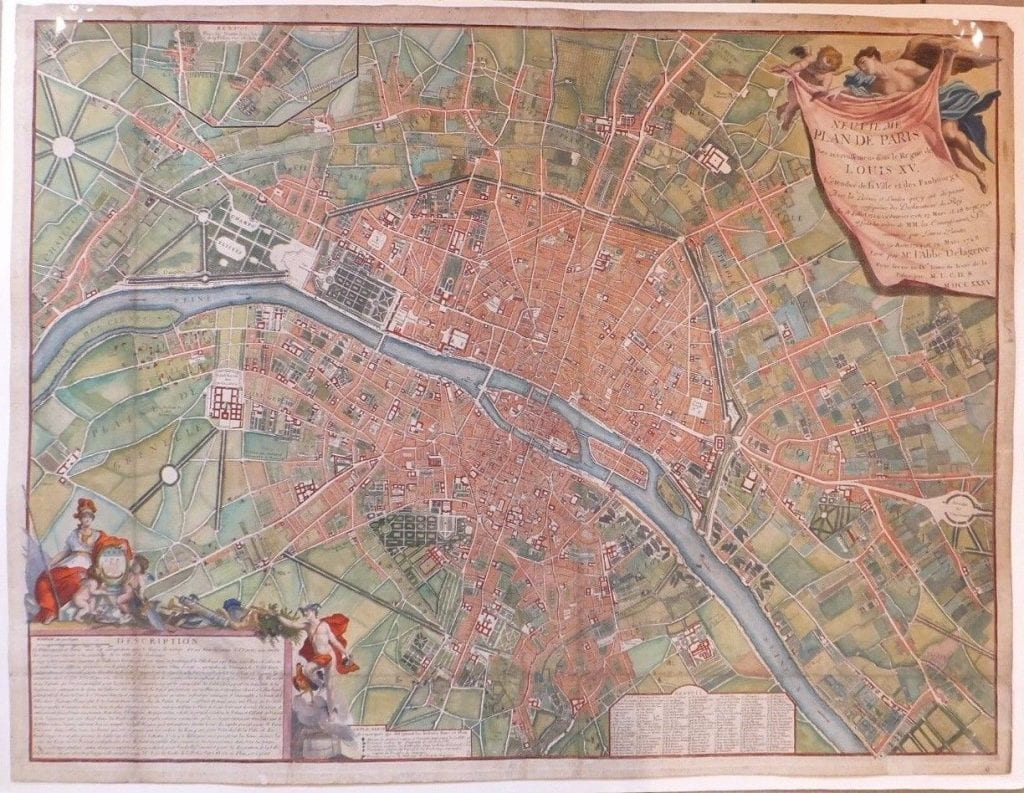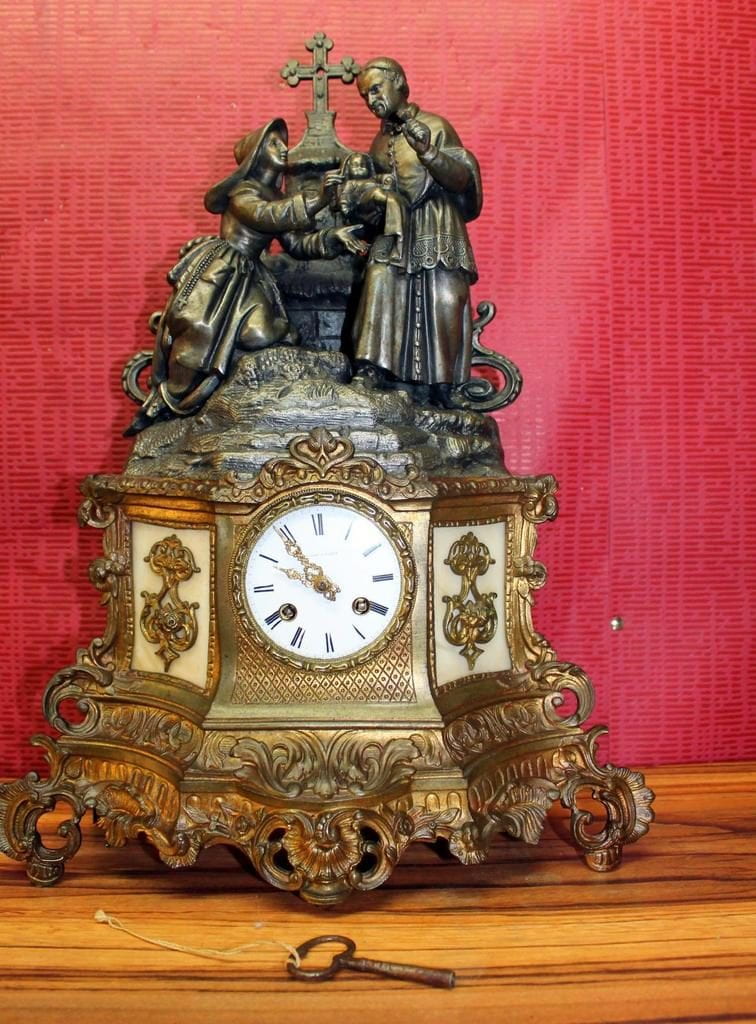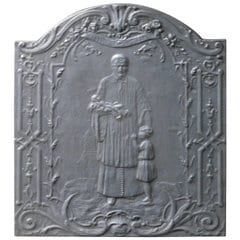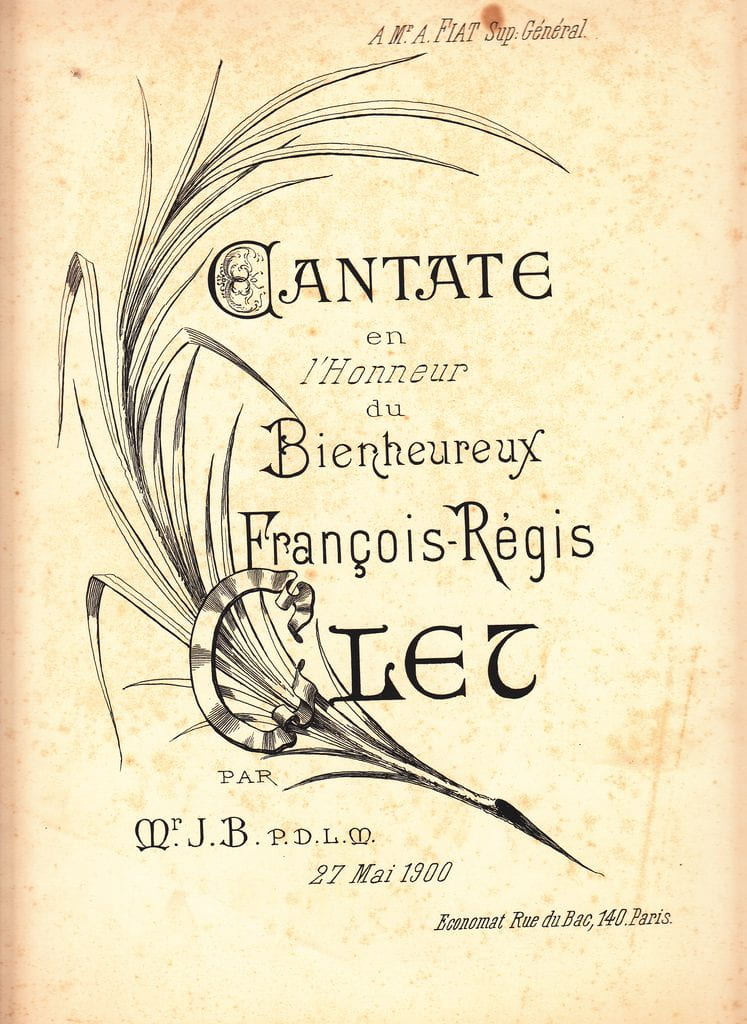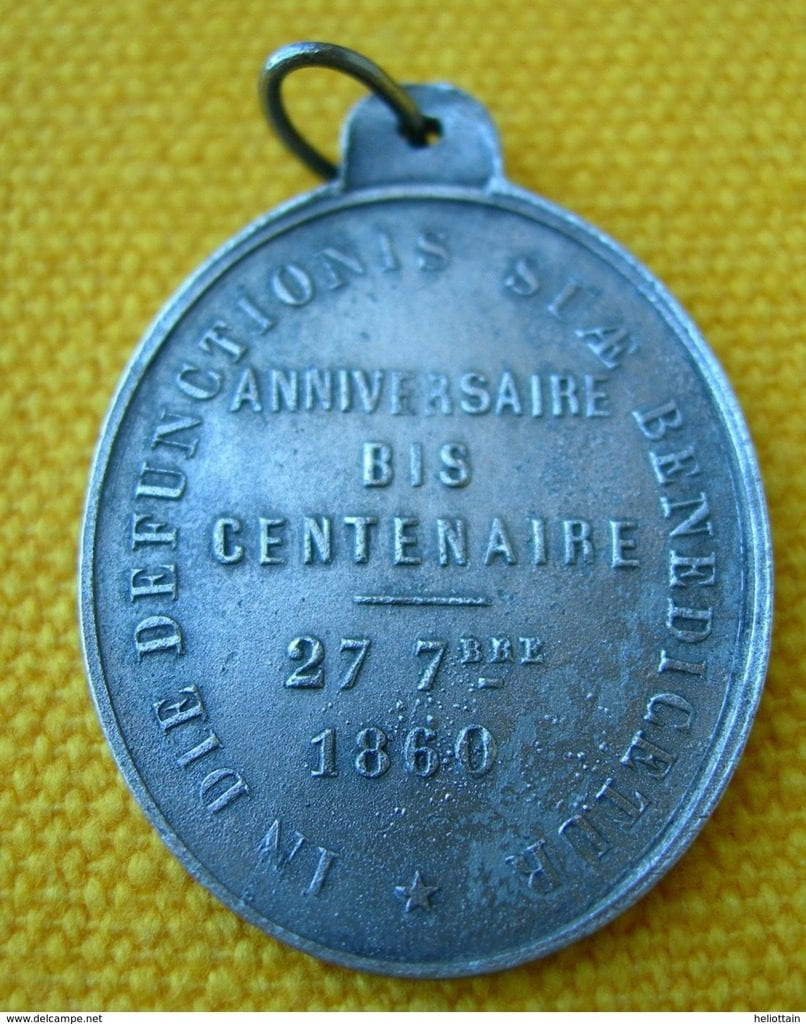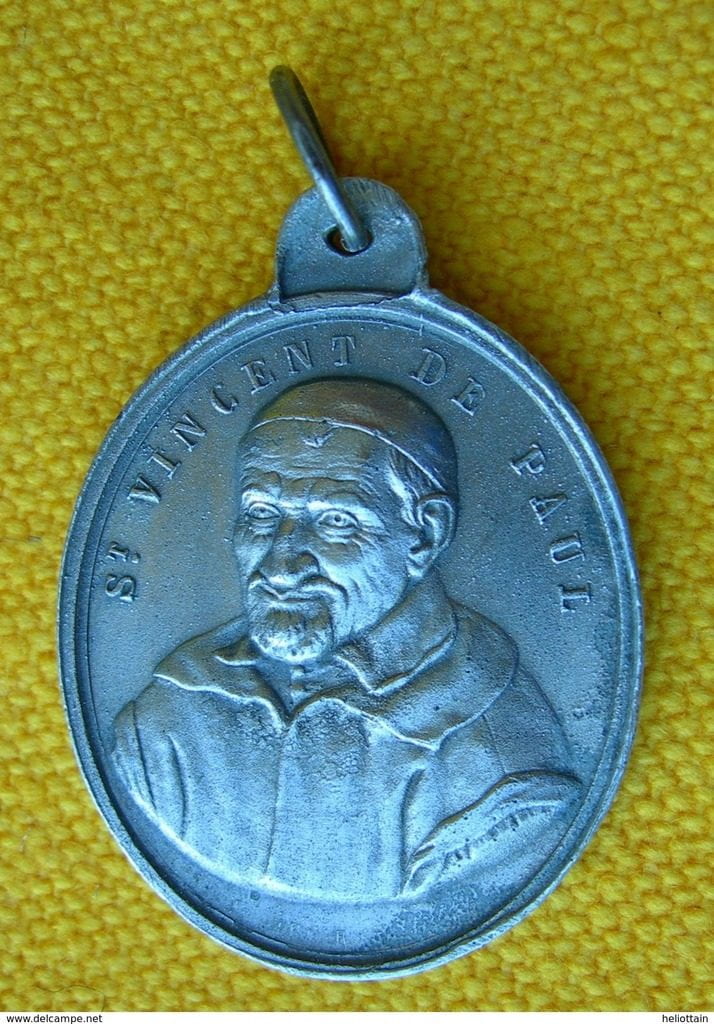The Vincentiana collection of the Archives and Special Collections Department of DePaul University’s Richardson Library has recently acquired a mid-19th century French transferware plate depicting a Daughter of Charity and orphans. The plate is 8 in x 8 in. The manufacturer was Geoferoy et Cie, Gien, France. The plate is #12 in a series entitled: “LES BONS EXEMPLES.” The central image is that of a Daughter Charity with a male and female orphan at her side. The setting is a church with the altar and poor box in the background. The sister is looking up in prayer and gesturing in supplication on behalf of the orphans in front of her.
archives
Newsnote: Rare 1735 map of Paris acquired including detailed depiction of Saint-Lazare
The Vincentian Collection at the Archives and Special Collections Department of DePaul University has acquired a rare map of Paris Jean Delagrive (1689-1757) Nicolas de La Mare (1639-1723) Neuvième plan de Paris ses accroissemens sous le règne de Louis XV. L’Etendüe de la ville et des faubourgs avec les bornes et limites qui y ont été posées en conséquence des déclarations du Roy des 18 juillet 1724 ; 29 janvier 1726 ; 23 mars et 28 sept 1728 et sous les ordres de Mm. les commissaires nommés par lettres patentes des 12 août 1724, et 29 mars 1728. Paris, 1735. 61,6 x 84,6 cm. Grand plan de Paris dressé et publié par l’abbé Delagrive en 1735, et le dernier de la série des 9 plans de Paris dressés pour le Traité de la Police, ouvrage publié par Nicolas Delamare entre 1722 et 1738. Il est orné d’un titre inscrit sur une draperie tenue par un ange et une femme ailée. En bas à gauche, le cartouche contenant la description du plan est orné de Minerve entourée d’amours dessinateurs, à laquelle Mercure rend visite. En haut à gauche, en carton, figurent les limites de La Chapelle et de La Villette. Contient une table de renvois : 1-58, une description des accroissements et embellissements, une explication des marques qui désignent les bornes dans ce Plan. RARE Plan très décoratif orné de ses 2 cartouches figuratifs. Sur papier vélin fort, en couleurs A l’origine ce plan était plié en 4. Jean Delagrive (né en 1689 à Sedan – mort en 1757) était un prêtre lazariste français, connu pour ses contributions à la cartographie et à la géométrie. Il a été le géographe attitré de la ville de Paris. Il était également membre de la Société Royale de Londres. Après de premières études en Ardennes, il vient à Paris et entre dans la congrégation de la Mission ou congrégation des prêtres de Saint-Lazare. Ordonné prêtre, il est envoyé en Pologne et enseigne ainsi la théologie à Cracovie en 1713. En 1714, il est de retour sur Paris et se consacre à la géométrie et à la cartographie. Il publie en 1718 le plan de la Capitale, publication qu’il estime trop imparfaite. Il en détruit les planches et s’attache désormais à obtenir des publications plus fidèles de ses relevés. Il est nommé géographe de Paris. Il est chargé notamment de cartographier le cours de la Seine et de ses affluents. Il publie également en 1740 un ouvrage sur Les Environs de Paris relevés géométriquement. Le premier atlas de Paris et de sa banlieue (qui n’est pas encore qualifiée de banlieue mais d’environs) ainsi que la première carte détaillée de la Seine sont conservés au département des cartes et plans. Ses travaux sont marqués par une grande exactitude, et par la qualité de leur édition. Il collabore avec César-François Cassini sur la détermination de la méridienne de l’Observatoire de Paris. Conseiller auprès de Colbert, l’abbé Delagrive est à l’origine de l’emplacement de l’Hôtel des Monnaies de Paris, quai de Conti. Le projet de transfert en cet immeuble a été dessiné en 1750. C’est sur l’une de ses cartes que serait apparu pour la première fois le nom des Champs-Elysées. Il n’oublie pas non plus sa passion pour la géométrie et publie notamment 1754 un manuel de trigonométrie sphérique. Ces travaux sont d’ailleurs cités dans l’Encyclopédie ou Dictionnaire raisonné des sciences, des arts et des métiers.
Newsnote: Vincentian Research Library Purchase: Saint-Lazare as a juvenile detention center
The Vincentian Research Library in Special Collections at DePaul University’s Richardson Library has recently purchased a 1696 manuscript entitled: “Arrests de la Cour de Parlement pour la correction des Enfans mineurs.” This document summarizes parlement’s decrees governing the incarceration of minors by their parents or guardians in Paris. The documents summarizes the decrees issues on 13 March 1673, 14 March 1678, and 27 October 1696. When Saint Vincent agreed to take possession of old Saint-Lazare in 1632 the Congregation of the Mission inherited seigneurial responsibilities for the administration of justice. In addition to wayward clerics, Saint-Lazare became a house of correction for juvenile youth. This fascinating document gives us new insights into Saint-Lazare as a penal institution during the Ancien Regime. The introduction to the document reads: “ARRESTS DE LA COUR DE PARLMENET…..Portant reglement general pour les Enfans mineurs que les Peres peuvent faire constituer prisonniers par correction dans la prison pour ce destinee, qui est a present celle de l’Officialite au lieu de Villeneuve sur Gravois, ou dans la Maison de Saint Lazare, jusques a l’age de vingt cinq ans, si ce n’est que les Peres ayent convole a de secondes noces; auquel case il ne le peuvent faire, non plus que les Mere tutrices & autres parens; sans l’Ordonnance de Lieutenant Civil du Chastelet; lequel pourra (si il le judge a propos) prendre l’avis de quelques uns des parents plus proches, tant du coste paternerl que maternel desdits Enfans mineurs.”
Newsnote: Rare 19th century St. Vincent de Paul Clock acquired
The Vincentiana Collection at DePaul University’s Archives and Special Collections recently acquired this spectacular and very rare mid- 19th century mantel clock featuring Saint Vincent de Paul entrusting a foundling to the care of a waiting Daughter of Charity. The clock movement was manufactured by Samuel Marti and Sons who were active in Paris in the second half of the 19th century. The bronze foundry and the artist remain to be identified.
Newnote: 19th century iron fireback with image of Vincent de Paul
The Vincentiana Collection at the Archives and Special Collections Department of DePaul University’s Richardson Library has recently acquired this rare 19th century French cast iron fireback depicting Vincent de Paul in a typical pose with foundling and a young child. The dimensions are 28.35 in H x 25.79 in. W x 0.63 in. D.
Newsnote: Vincentiana Purchase of the Week “Elaborate late 19th century Vincent holy card.”
The Vincentiana Collection at DePaul University’s Archives and Special Collections departments typically collects and adds several Vincent de Paul holy cards per week. This collecting has been going on for more than a decade, and there seems to be no end to the variety of these popular iconographic depictions of St. Vincent. This late 19th century example does not have a maker’s mark, but almost all of these cards were produced in Paris. The coloring, embossing, and other features suggest a late 19th century dating.
Newsnote: Vincentiana Purchase: Crimean War Transferware Plate featuring the Sisters of Charity
The Vincentiana Collection of DePaul University’s Archives and Special Collections recently purchased a mid-19th century transferware plate depicting the battlefield nursing of the Daughters of Charity during the Crimean War. The produce was Geoffroy and Sons in Gien. Beginning in the mid-19th century these inexpensive transferware plates produced for decorative and collecting purposes became very popular among the emerging middle-class with disposable income for decorative pieces. This plate is #5 from a series commemorating the Crimean War (1853-1856).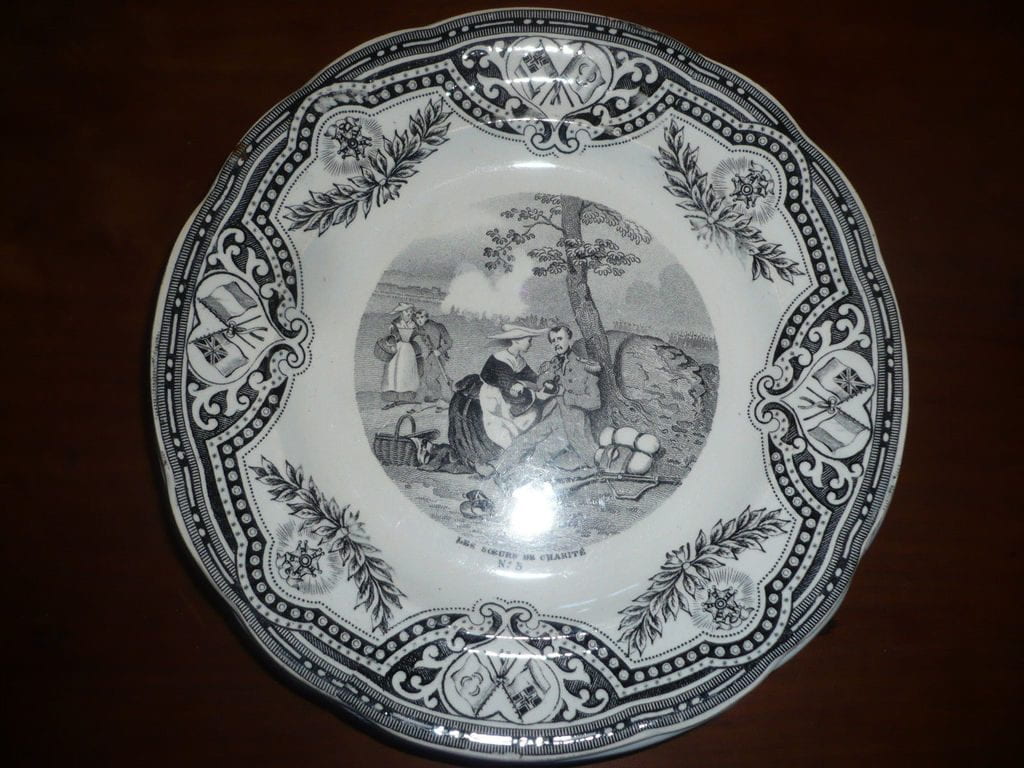
Vincentiana Purchase of the Week: “Cantate en l’Honneur du Bienheureux Francois-Regis Clet”
The Vincentiana Collection in Archives/Special Collections of DePaul University has recently acquired a copy of a cantata for four voices composed by “Mr. J.B. p.d.l.m.” The work is dedicated to the then superior general of the Congregation of the Mission and the Company of the Daughters of Charity: Monsieur Antoine Fiat. The work is dated 27 May 1900 which was the date of Clet’s beatification. It was published at the Economat of the Daughters of Charity at Rue du Bac, 140.
Newsnote: Vincentiana Purchase of the Week: 1859 English engraving of Daughters of Charity
It is interesting that this 1859 print by the English engraver Matthew James Lawless (1837-1864). Mis-identifies the Daughters of Charity as “Sisters of Mercy.” The Daughters of Charity first came in England in 1847 so they were a relatively new feature on the English scene during the 19th century re-birth of English Catholicism after the restoration of the Catholic Hierarchy by Pius IX in 1850. Information on Lawless follows below: “An original etching by Matthew James Lawless (1837-1864), Sisters of Mercy is one of the finest etchings published by the Junior Etching Club. This warm, domestic scene depicts two nuns and a young girl preparing a meal within a rustic kitchen. One of the sisters peels a carrot while the other is gathering more vegetables from the child’s apron. What makes Lawless’s composition most remarkable, however, is its point of view, as it is depicted from the actual eye level of the infant. This original etching served as an illustration for Gerald Griffin’s (1803-1840) poem, The Sister of Mercy. Several lines from the poem are quoted below; “She put from her person the trappings of pride, And passed from her home with the joy of a bride; Forgot are the claims of her riches and birth, For she barters for Heaven the glory of Earth!” * Gerald Griffin Sisters of Mercy, is one of four of his works of art that was commissioned by the Junior Etching Club for the 1862 portfolio, Passages from Modern English Poets. The artist’s other etched contributions are The Little Shipwright, The Drummer and The Bivouac.is signed and dated “M. J. Lawless 1859” by Matthew James Lawless within the etching and bearing the artist’s name “M. J. Lawless” and the publisher’s name and date, “London, Published December 1st, 1861 by Day & Sons, Lith. to the Queen” along the lower margin of the plate. This is a fine, original example of the etched art created by the British artist, Matthew James Lawless.” See: http://www.artoftheprint.com/artistpages/lawless_mathew_james_siste…
